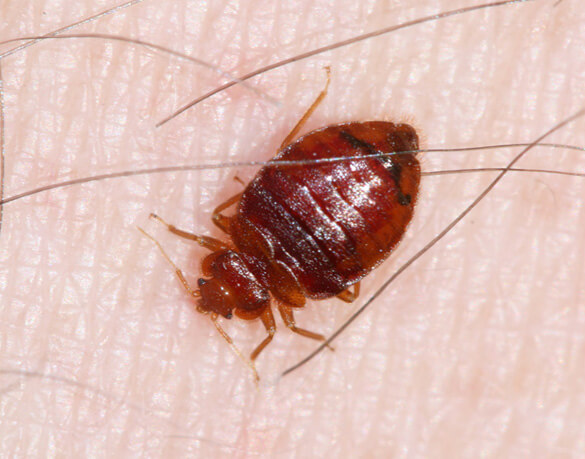Bed Bugs
CENTRAL TEXAS & San Antonio Bed Bug Removal
Appearance
Bed bugs are flat, reddish-brown, oval insects up to 4 to 5 mm long or the size of an apple seed. Swollen and reddish after a blood meal. For more information, see what do bed bugs look like?
Behavior, Diet & Habits
Bed bugs only feed on blood. Under cool conditions, bed bugs have been able to survive up to a year without a meal. They prefer to be more active at night when the host is asleep.
Bed bugs are found in cracks and crevices, including mattress seams, sheets, furniture, behind baseboards, electrical outlet plates and picture frames. Often found in hotels, where they can travel from room to room and in visitors’ luggage or other personal belongings such as purses and briefcases.

How do you get bed bugs?
You can pick up bed bugs almost anywhere — offices, stores, hotels and gyms for starters. They’re great at hiding and have been known to hitchhike in luggage, personal belongings or even you. Once indoors, they can be very difficult to control without the help of an experienced pest specialist. You can reduce your chances of a costly bed bug infestation by catching them early.
How serious are bed bugs?
Reproduction
Females can deposit one to five eggs a day, and may lay 200 to 500 eggs in a bed bug’s lifetime. Under normal room temperatures and with an adequate food supply, they can live for more than 300 days.
Bed Bugs and Disease
It is possible that bed bugs can carry diseases, however, they are not known to transmit diseases to people.
Bed Bug Bites
Bed bugs feed exclusively on blood, and people have various responses to bed bug bites.
Who do we call?
iPest serves Waco, Killeen (Bell County), College Station, & San Antonio and are ready to serve you!

